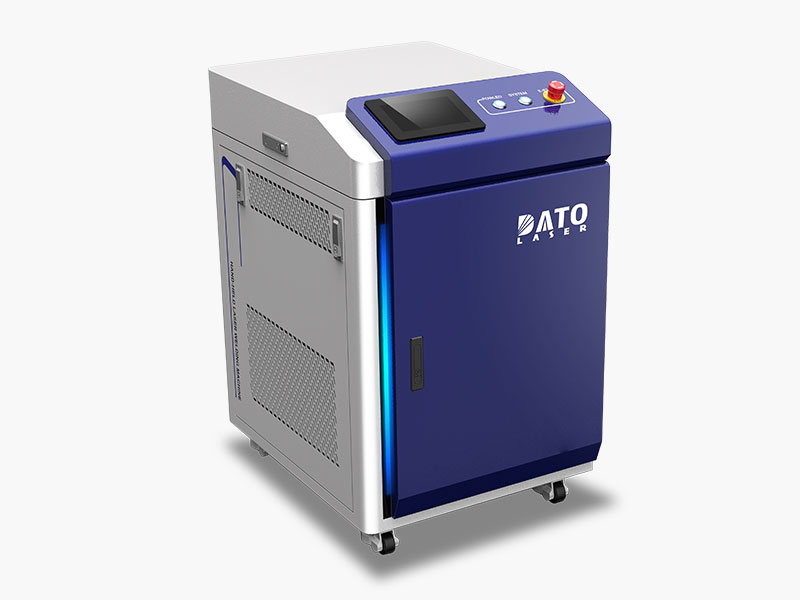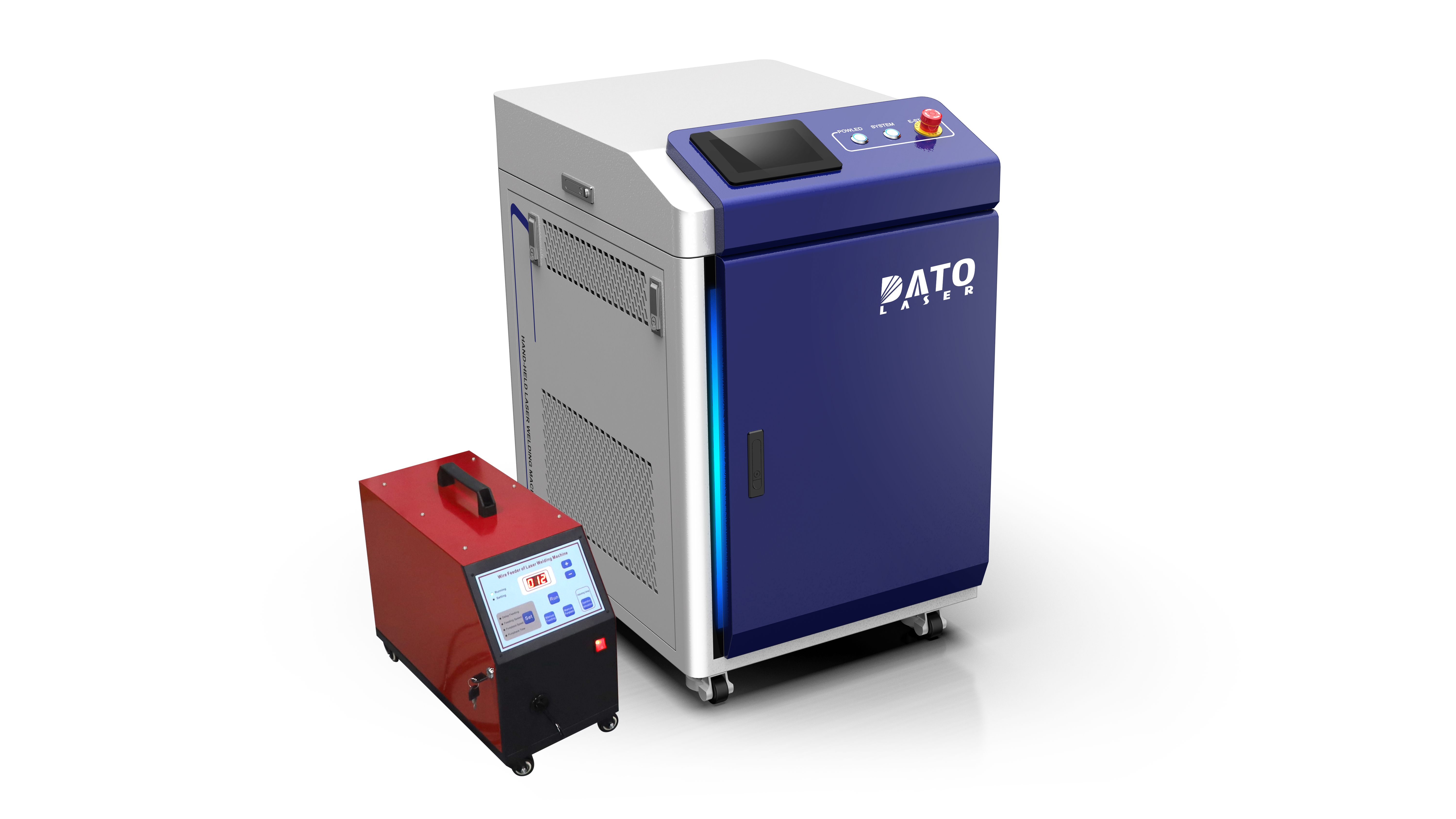Does Fiber Laser Welding Require Filler Wire?

Understanding Fiber Laser Welding and Filler Wire Usage
Fiber laser welding is an advanced joining technology widely used in industries such as automotive, aerospace, electronics, and heavy machinery manufacturing. One common question among manufacturers is whether fiber laser welding requires filler wire or if it can operate without additional material. The answer depends on various factors, including the material type, joint configuration, and desired weld strength.
At DATO and Leapion, we provide cutting-edge fiber laser welding machines designed for precision, efficiency, and flexibility. Whether your business requires autogenous welding (welding without filler wire) or additional filler material for enhanced joint strength, our solutions cater to diverse applications.
What is Autogenous Fiber Laser Welding?
Autogenous welding is a process where metals are joined without the use of filler wire. Instead, the fiber laser melts and fuses the base metals directly, creating a strong and seamless bond. This method is particularly effective when working with thin metal sheets, well-matched joint configurations, and materials with good weldability, such as stainless steel and carbon steel.
For many industries, autogenous fiber laser welding is preferred because it offers high speed, minimal heat input, and reduced material costs. However, there are scenarios where using filler wire is necessary to ensure optimal weld quality and structural integrity.
When Does Fiber Laser Welding Require Filler Wire?
Welding Dissimilar Materials
In applications where different types of metals are being welded together, filler wire can help bridge the gap between different melting points and chemical compositions. This is particularly common in industries where aluminum, titanium, and copper alloys need to be welded without compromising joint integrity.
Filling Gaps and Improper Joint Fit-Ups
In cases where the joint fit-up is not perfect, filler wire can compensate for gaps or inconsistencies in the workpieces. This ensures a uniform weld bead and prevents defects such as porosity or weak bonding, which can occur when relying solely on autogenous welding.
Enhancing Mechanical Strength and Corrosion Resistance
Certain welding applications require improved strength, durability, and resistance to corrosion. By adding filler wire, manufacturers can reinforce the weld structure, ensuring long-lasting performance in demanding environments such as shipbuilding and structural engineering.
Welding Thick Materials
While fiber laser welding is ideal for thin materials, thicker sections (above 5-6mm) often benefit from filler wire to increase weld penetration and joint strength. The filler material helps in distributing the heat more evenly, reducing the risk of cracking or distortion in heavy-duty applications.
Advantages of Using Filler Wire in Fiber Laser Welding
While autogenous welding is efficient, integrating filler wire into fiber laser welding offers additional advantages:
Increased Weld Strength: Reinforces the joint, reducing the risk of fractures under mechanical stress.
Improved Metallurgical Properties: Helps in controlling the composition of the weld, which is essential when welding dissimilar metals.
Better Aesthetic Finish: Reduces defects such as undercuts and irregular bead profiles.
Enhanced Crack Resistance: Prevents hot cracking, which is common in some high-strength alloys.
How Filler Wire is Integrated in Fiber Laser Welding
Fiber laser welding machines can be equipped with automatic wire feeders, which precisely control the deposition of filler material. This ensures consistent and repeatable weld quality, even in high-production environments. The type of filler wire used depends on the base metal composition, welding speed, and desired weld properties.
Common filler wire materials include:
Stainless Steel (ER308, ER316): For corrosion-resistant welding applications.
Aluminum (ER4045, ER5356): Ideal for aerospace and automotive industries.
Nickel and Copper Alloys: Used in high-temperature and electrical applications.
Choosing the Right Fiber Laser Welding Machine for Your Needs
Whether your business requires autogenous welding or filler wire-assisted welding, selecting the right fiber laser welding machine is essential. DATO and Leapion offer high-precision fiber laser welders that support both welding techniques, ensuring adaptability across various industries.
Key features to consider when selecting a fiber laser welding machine include:
Power Output: Machines with 1kW to 6kW lasers for different material thicknesses.
Wire Feeding System: Optional automatic wire feeding for precise filler wire control.
Adjustable Welding Modes: Support for both autogenous and filler-assisted welding.
CNC and Robotic Integration: Enhanced automation for improved productivity.
Conclusion: Does Fiber Laser Welding Always Require Filler Wire?
The need for filler wire in fiber laser welding depends on factors such as joint design, material thickness, and application requirements. While autogenous fiber laser welding is widely used for its speed and efficiency, filler wire becomes necessary in cases involving dissimilar metals, thick materials, and structural reinforcement.
At DATO and Leapion, we provide cutting-edge fiber laser welding machines tailored to diverse industrial applications. Whether you need a high-speed autogenous welding solution or an advanced filler wire-integrated system, our expert team can help you select the best technology for your manufacturing needs.
Contact us today to learn more about how fiber laser welding can enhance your production capabilities.
Related Blogs
-
 Exploring the Safety, Precision, and Industrial Benefits of Laser Surface CleaningIn today’s fast-paced industrial world, where quality, efficiency, and sustainability are top priorities, manufacturers are constantly seeking better ways to clean metal surfaces without compromising material integrityBlog
Exploring the Safety, Precision, and Industrial Benefits of Laser Surface CleaningIn today’s fast-paced industrial world, where quality, efficiency, and sustainability are top priorities, manufacturers are constantly seeking better ways to clean metal surfaces without compromising material integrityBlog -
 A Complete Guide by DATO and LeapionIn modern industry, surface preparation and maintenance play a crucial role in achieving high-quality manufacturing results. Laser cleaning machines have emerged as one of the most innovative, efficient, and environmentally friendly tools for removing contaminantsBlog
A Complete Guide by DATO and LeapionIn modern industry, surface preparation and maintenance play a crucial role in achieving high-quality manufacturing results. Laser cleaning machines have emerged as one of the most innovative, efficient, and environmentally friendly tools for removing contaminantsBlog -
 Laser cleaning machines are revolutionizing industrial surface cleaning by offering a faster, safer, and more eco-friendly alternative to traditional methods. Whether removing rust, paint, oil, oxide, or other surface contaminants, laser cleaning has become a cutting-edge solution in manufacturing,Blog
Laser cleaning machines are revolutionizing industrial surface cleaning by offering a faster, safer, and more eco-friendly alternative to traditional methods. Whether removing rust, paint, oil, oxide, or other surface contaminants, laser cleaning has become a cutting-edge solution in manufacturing,Blog -
 Introduction: Transforming EV Battery Manufacturing Through Laser TechnologyThe electric vehicle revolution has accelerated dramatically over the past decade, bringing with it unprecedented challenges and opportunities in battery manufacturing. As global automakers commit billions to electrificationBlog
Introduction: Transforming EV Battery Manufacturing Through Laser TechnologyThe electric vehicle revolution has accelerated dramatically over the past decade, bringing with it unprecedented challenges and opportunities in battery manufacturing. As global automakers commit billions to electrificationBlog















